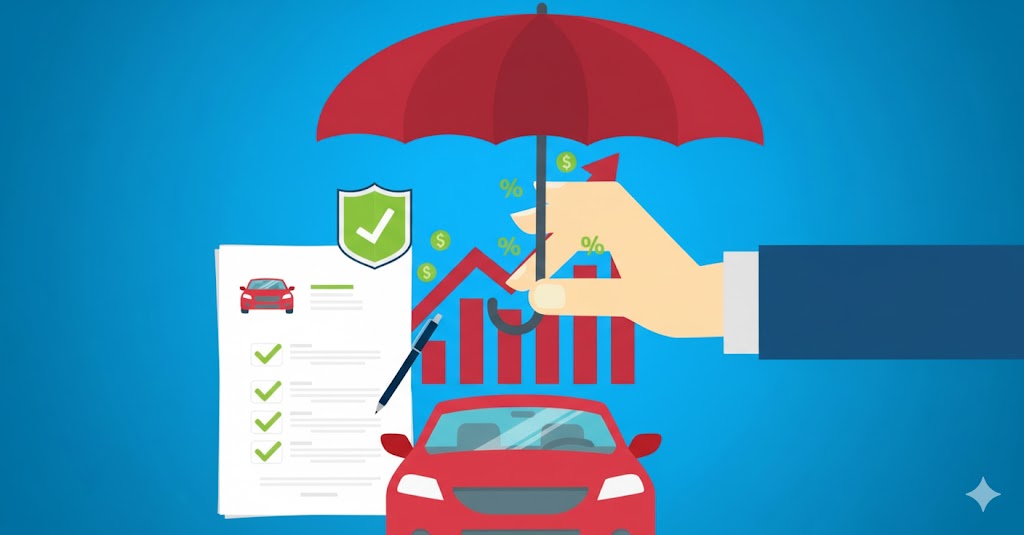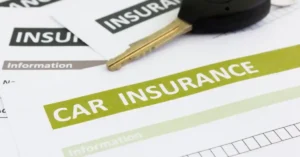Car insurance costs are on the rise again in 2025, but how much should Americans really be paying for coverage? With inflation, repair costs, and climate-related risks all influencing premiums, the average car insurance cost in the United States has reached record levels.
According to recent data from Bankrate, the typical annual premium for full coverage now averages around $2,500 per year, up nearly 12% from 2024. For drivers seeking minimum coverage, the national average is about $650 annually, depending on state, age, and driving record.
Insurers attribute these increases to rising vehicle repair prices, accident frequency, and extreme weather events that have led to higher claim payouts.
Average Car Insurance Costs by Coverage Type in 2025
Car insurance premiums vary significantly based on coverage levels. Here’s a look at the U.S. average breakdown for 2025:
| Coverage Type | Average Annual Cost |
| Minimum Liability | $650 – $900 |
| Full Coverage | $2,200 – $2,600 |
| Comprehensive Only | $300 – $500 |
| Collision Only | $800 – $1,200 |
These numbers reflect national averages, but costs differ widely by state and personal factors such as age, vehicle model, and credit history.
Why Car Insurance Costs Are Rising in the United States
1. Inflation and Vehicle Repair Costs
Repair and replacement expenses have surged due to supply chain disruptions and expensive modern vehicle technology. Parts such as sensors, cameras, and batteries used in electric vehicles are costly to replace, driving up claim payouts and, in turn, premiums.
2. Increased Frequency of Accidents
While driving volumes have stabilized post-pandemic, road fatalities and severe accidents have risen. According to the National Highway Traffic Safety Administration (NHTSA), the U.S. recorded over 40,000 fatalities in 2024, one of the highest in decades pushing insurers to recalibrate risk models.
3. Climate Change and Natural Disasters
Hurricanes, floods, and wildfires have increasingly damaged vehicles across states such as Florida, California, and Texas. As a result, insurers are raising premiums in high-risk ZIP codes or even withdrawing from certain markets altogether.
4. Medical and Legal Costs
Bodily injury and litigation expenses continue to grow. States with higher healthcare costs or litigation rates, like New York and Michigan, tend to have higher auto insurance premiums.
How Location Impacts Car Insurance Costs?
The car insurance cost in the United States depends heavily on geography. For example:
- Florida: Average annual premium exceeds $3,400, largely due to hurricane exposure and fraud-related claims.
- California: Around $2,900 annually, influenced by wildfire risk and high repair costs.
- Texas: Average rate is $2,300, reflecting frequent hail and storm claims.
- Maine and Vermont: Among the lowest at under $1,200 per year, thanks to low population density and fewer claims.
Regional insurance regulation and state minimum coverage requirements also play a major role in premium differences.
Factors That Determine Your Car Insurance Premium
Several personal and vehicle-related factors influence how much a driver pays for insurance in 2025:
- Age and Gender: Younger drivers under 25 typically pay higher rates.
- Driving Record: Accidents, speeding tickets, or DUIs can increase premiums for years.
- Credit Score: Most insurers use credit-based scoring models to assess risk.
- Vehicle Type: Luxury and EV models tend to cost more to insure due to higher repair and replacement costs.
- Annual Mileage: More time on the road means higher risk and higher premiums.
- Coverage and Deductibles: Choosing higher limits or lower deductibles increases total cost.
Tips to Save on Car Insurance in 2025
While premiums are climbing, there are still smart ways to manage the car insurance cost in the United States:
- Shop Around: Compare quotes from at least three insurers each renewal period. New competitors often offer discounts to attract customers.
- Bundle Policies: Combine home, renters, or life insurance with the same provider for up to 25% in savings.
- Increase Deductibles: Opting for a higher deductible can reduce monthly premiums, though it means paying more out-of-pocket in an accident.
- Use Telematics or Usage-Based Programs: Many insurers now reward safe driving behavior through apps that monitor habits and mileage.
- Ask for Discounts: Good driver, low mileage, and defensive driving course discounts can add up quickly.
As CNBC reports, drivers who review their policies annually save an average of $400–$600 per year on coverage.
The Future of Car Insurance Costs
Looking ahead, car insurance pricing is expected to remain volatile. The growing adoption of electric vehicles (EVs) and autonomous driving systems may eventually reduce accidents, but repair complexity will keep costs elevated in the short term.
Insurtech companies and AI-based underwriting tools are helping insurers better predict risk, potentially leading to more personalized and fair pricing models by 2026.
However, for now, most analysts expect car insurance costs in the United States to rise another 5 to 8% in 2026, especially in high-risk states.
Last Words
The average car insurance cost in the United States in 2025 stands at around $2,500 for full coverage, a number shaped by inflation, accident trends, and climate risks. While rates will likely continue to rise, informed consumers can still find savings through comparison shopping, bundling, and safer driving habits.
Car insurance remains an unavoidable expense for U.S. drivers, but understanding what drives pricing empowers you to take control of your coverage costs in an ever-changing market.







